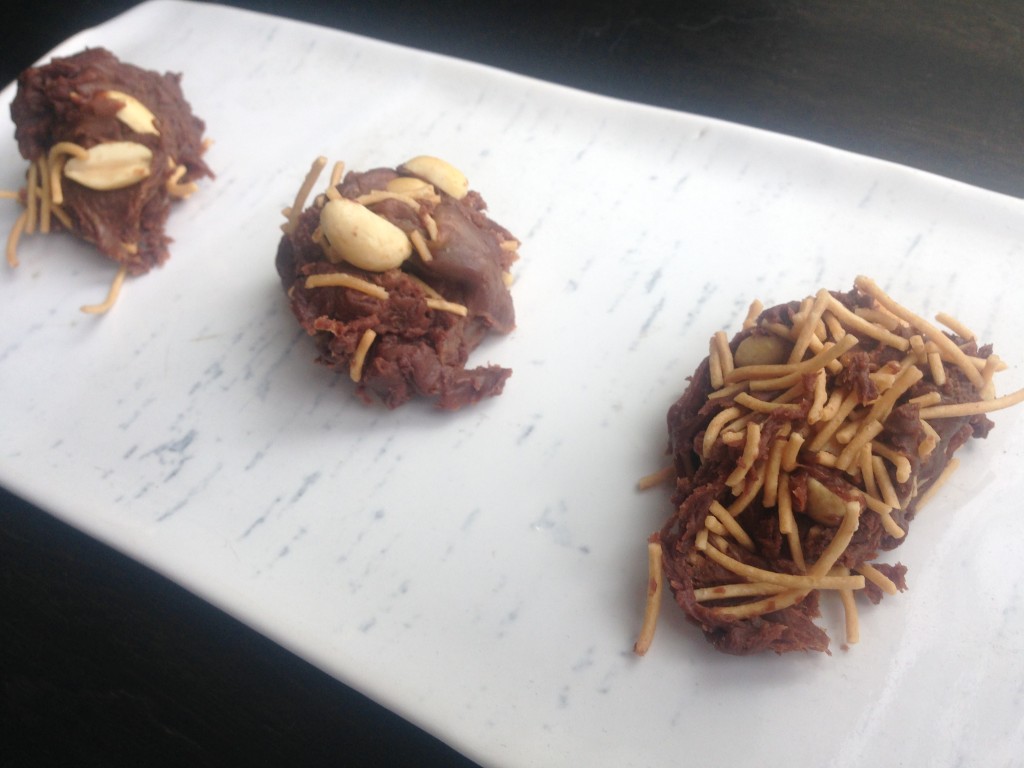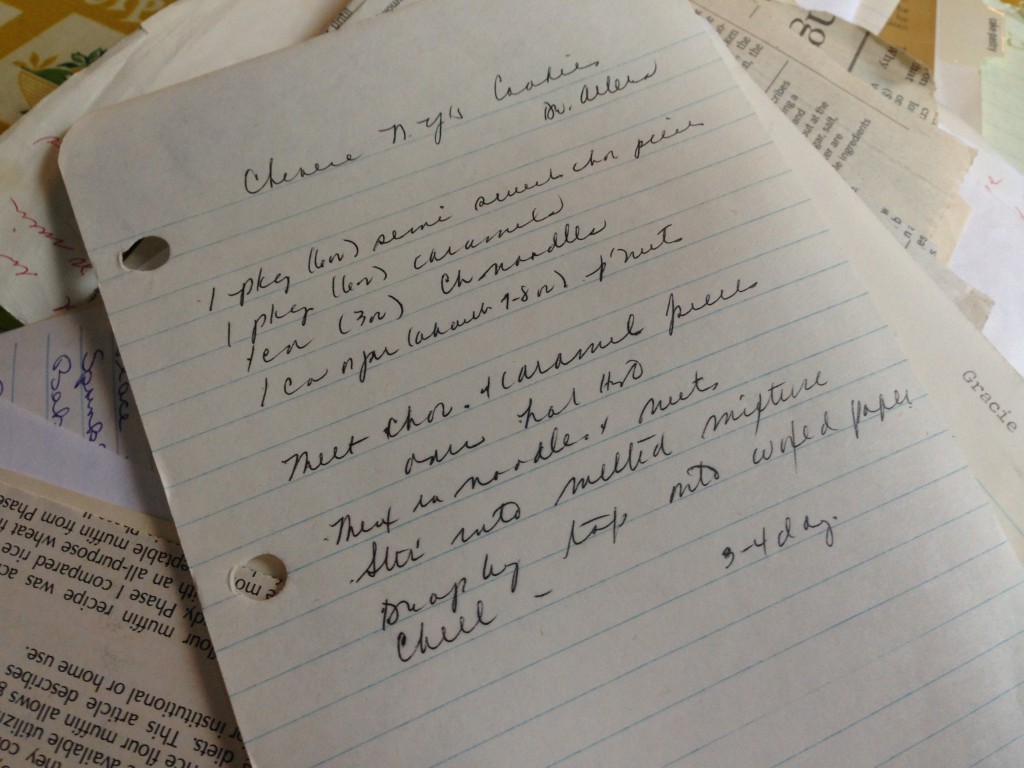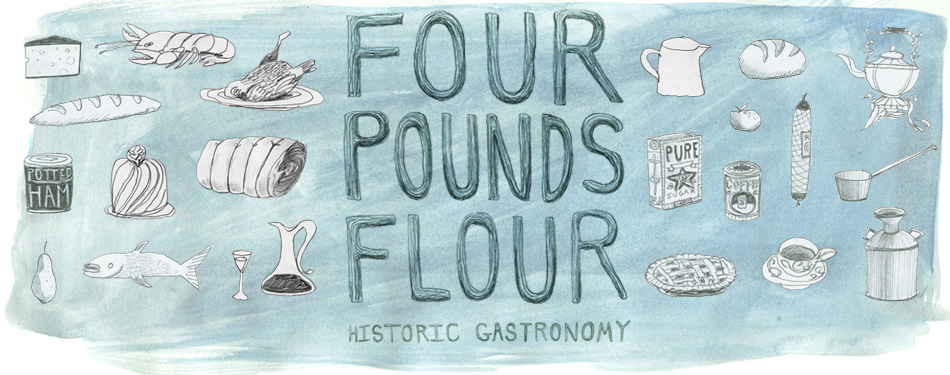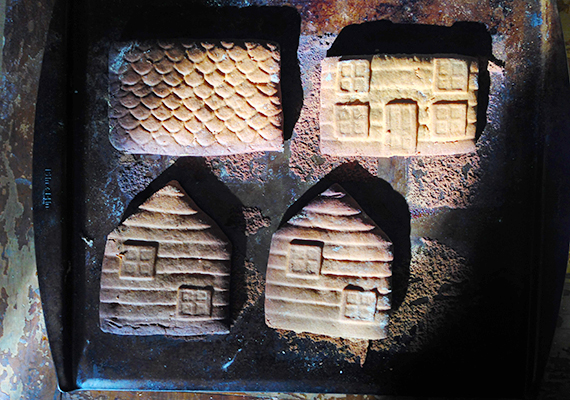 Chinese New Year Cookies…there was nothing I could do to them to make them look less like poops.
Chinese New Year Cookies…there was nothing I could do to them to make them look less like poops.
The Chinese New Year starts tomorrow, so in celebration I thought it would be fun to make a vintage recipe for Chinese New Year Cookies. It’s too bad these cookies look like poop.
The History
This recipe come from the same vintage collection as my Moose Milk recipe, and caught my eye because I had never seen a Chinese New Year-themed confection in an otherwise anglo recipe collection. What makes these cookied Chinese-ish is the inclusion of Chinese noodles: crispy fried rice noodles, like the kind you get with a take-out order of wonton soup. I can’t even begin to answer the question of whether or not these noodles are authentic in any way, fully Americanized, or some combination thereof. It seems that they’re such a niche aspect of Chinese take-out that no one has ever bothered to wonder before. Anyone out there have a clue?
The Recipe

Chinese New Years Cookies
Written by B. Allen. From a recipes collection dating between the 1960s-1990s.
1 pkg (6oz) Semi sweet chocolate chips
1 pkg (6oz) Caramels
1 can (3oz) Chinese noodles
1 can or jar (7-8 oz) Peanuts
- Melt chocolate and caramel.
- Mix in noodles and nuts.
- Scoop by teaspoon onto waxed paper. Chill.
Makes 2-4 dozen.
The Results
 A hot mess from start to finish.
A hot mess from start to finish.
This entire recipe was a hot mess from start to finish. Something was off about the texture–when the chocolate and caramel melted together, it was so thick. My friend Pat and I got into a long debate about whether or not it was the qaulity of the caramels, or if I had used too many in proportion to the chocolate, but the point is moot because nothing will stop these cookies from looking like tiny piles of poo.
They also taste like tootsie rolls with Chinese noodles jammed up inside them.
Enjoy the New Year, instead, with some of those strawberry candies. Those are great.

 Building my gingerbread house.
Building my gingerbread house.